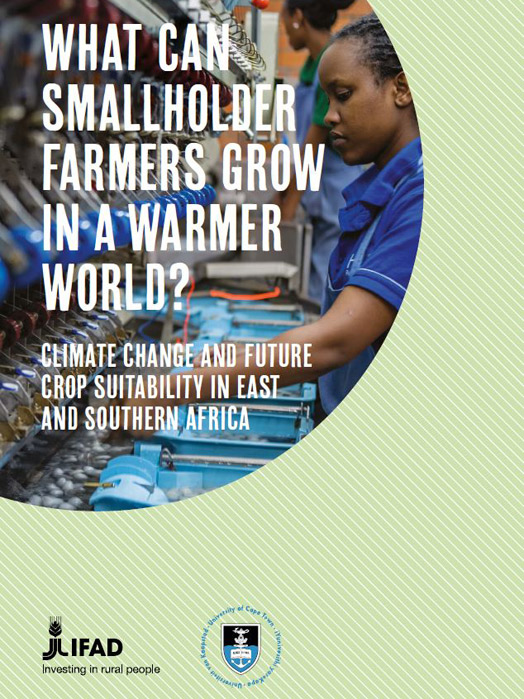¿Qué pueden cultivar los pequeños agricultores en un mundo de cambio climático? La futura idoneidad de los cultivos en África oriental y meridional
¿Qué pueden cultivar los pequeños agricultores en un mundo de cambio climático? La futura idoneidad de los cultivos en África oriental y meridional
Con la financiación del ASAP+, la Universidad de Ciudad del Cabo elaboró ocho informes de análisis de riesgos climáticos que abarcan Angola, Lesoto, Malawi, Mozambique, Rwanda, Uganda, Zambia y Zimbabwe.
Disponible solo en inglés.
With funding from ASAP2, eight Climate Risk Analysis reports were produced by the University of Cape Town, covering Angola, Lesotho, Malawi, Mozambique, Rwanda,Uganda, Zambia and Zimbabwe.
The reports assessed the future suitability of selected crops in each country, particularly staples grown by subsistence farmers such as beans, cassava, cowpea, groundnuts, maize, millet, peas, pigeon peas, sesame, sorghum, sweet potato and wheat.
The reports analyse the likely effects of climate change by mid-century and reach strikingly similar conclusions. Far from staying within the safe space of 1.5°C, temperature increases in the hottest months in all eight countries are predicted to be a full 2°C or more, and could reach as much as 2.6°C in some places. At the same time, rainfall is forecast to decrease by well over 20 mm in the driest months, and by more than 100 mm per year in the worst hit nations.
Download the Climate Risk Analysis reports for each country:

Temas
Cultivos, Clima y medio ambiente
Región